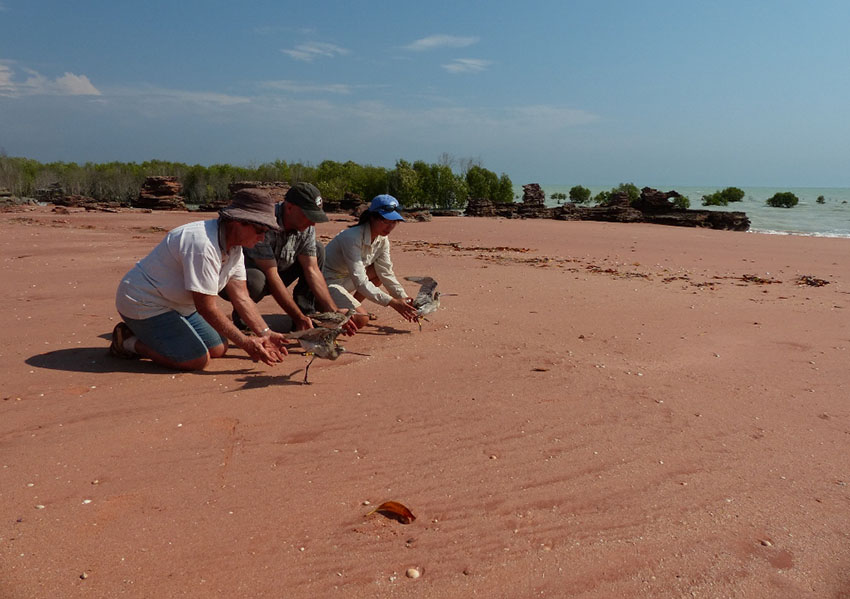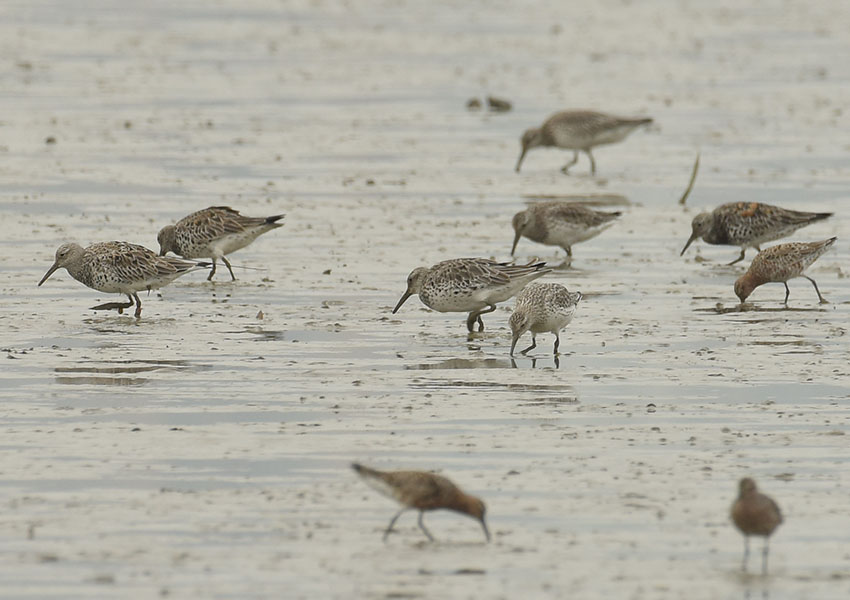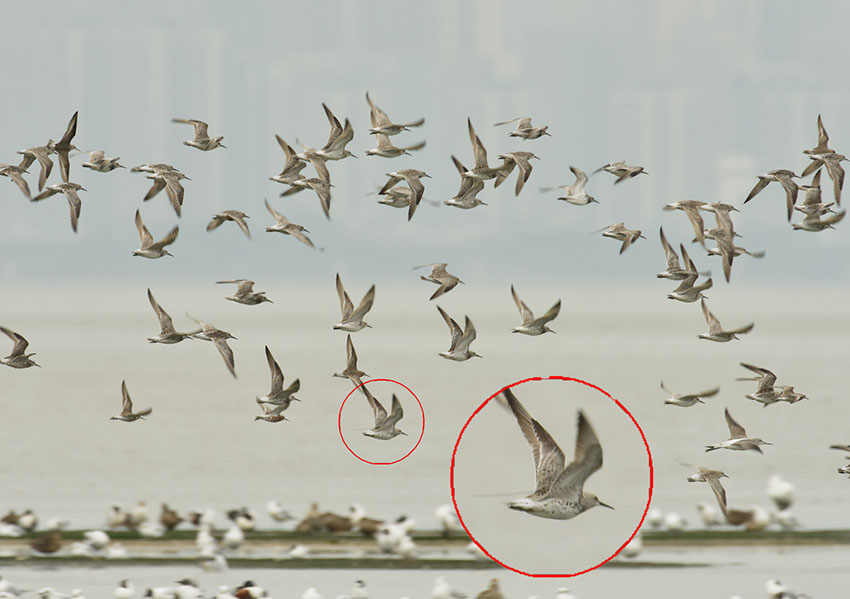Migrating Great Knots top up at different ‘service stations’ than previously thought
Last week, inspired by the importance of Europe’s Wadden Sea for migratory birds, China successfully nominated parts of its own ‘Wadden Sea’ in the Yellow Sea for UNESCO World Heritage status. Yet the list of protected areas is still far from complete. A new study, which tracked Great Knots fitted with satellite transmitters as they migrated from Australia to the tundra of northern Russia, has challenged a common assumption. The researchers identified 92 resting and foraging sites, 83% of which were previously unknown to bird researchers, conservationists and government agencies. The birds use these sites to ‘top up their tanks’ as they follow the migration route from Borneo to Kamchatka in Russia.
People in nature conservation circles had always assumed that all of the major coastal sites used by these birds had already been identified. So, the satellite data obtained from these birds came as something of a shock to the international team of researchers from NIOZ (the Royal Netherlands Institute for Marine Research), the University of Groningen (UG), and three Chinese universities. Great Knots (Calidris tenuirostris) are closely related to the Red Knots (Calidris canutus) that are found around the Wadden Sea. Great Knots, however, are only found along the East Asian-Australasian Flyway. Great Knots had previously been found in over 60% of the foraging sites in and around the Yellow Sea (in China, North Korea and South Korea) that were identified by this study. However, more than half of the foraging sites discovered in South China and Eastern Russia were previously unknown. By fitting the birds with satellite transmitters, the study discovered 25 major new sites in Southeast Asia – specifically, in Vietnam, the Philippines, Malaysia and Indonesia – where these shorebirds stopped to feed on shellfish.




No protection
As yet, none of these previously undescribed coastal sites has protected status. This is a problem, because the Great Knot – whose population is declining by several percent each year – is an endangered species.
The principal investigator, Prof. Theunis Piersma of the NIOZ and UG, explained that “Fitting shorebirds with very tiny transmitters enables us to chart the distribution of the world’s most extreme migratory birds, unhindered by logistical or political restrictions. Time and time again, studies of this kind serve to remind us that the factual knowledge underpinning our nature conservation efforts is simply not up to scratch. In addition, by tracking these satellite transmitters for more than a year, we identified rapid changes in area use and migratory routes that appear to be caused by habitat loss and climate change. In this way, shorebirds are the wild counterparts of the caged canaries in the coal mine ”.
| Last modified: | 19 March 2020 4.09 p.m. |
More news
-
29 August 2025
Top Dutch Solar Racing stranded just before the finish line, but returns proudly
From August 24 to 31 this year, the student team Top Dutch Solar Racing will participate in the Bridgestone World Solar Challenge. This page will keep you up to date on the latest developments during and around the race.
-
21 August 2025
Upconversion nanoparticles to aid the application of molecular motors
Scientists from Groningen University and the University of Amsterdam have developed upconversion nanoparticles to assist in powering molecular motors.
-
19 August 2025
Bruno Ehrler appointed new director of AMOLF
Honorary professor Bruno Ehrler of the University of Groningen has been appointed as the new director of AMOLF, the NWO Institute for research into functional complex matter.
